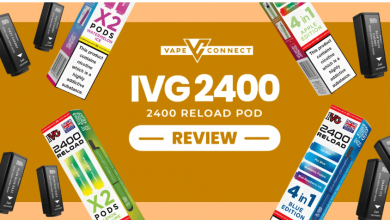Tool Calibration Services: The Foundation of Quality Manufacturing

In the world of manufacturing and industrial production, precision isn’t just a virtue—it’s a necessity. The difference between a perfect product and a rejected one often comes down to fractions of a millimeter or tiny variations in applied force. Behind every quality product stands a suite of properly calibrated tools and instruments. This is why tool calibration services have become an indispensable part of modern manufacturing operations.
The Critical Role of Tool Calibration in Manufacturing
Manufacturing excellence relies on consistency and repeatability. When tools drift out of calibration, several critical problems emerge:
Quality Inconsistencies: Uncalibrated measuring instruments lead to parts that appear to meet specifications during production but actually fall outside acceptable tolerances.
Production Inefficiencies: Time and materials are wasted producing components that ultimately fail quality checks downstream.
Equipment Damage: Tools like torque wrenches, when improperly calibrated, can lead to under-tightened fasteners that work loose or over-tightened ones that damage threads or components.
Safety Risks: In critical applications—from automotive manufacturing to aerospace—improperly calibrated tools can lead to component failures that endanger lives.
Compliance Violations: Many industries face strict regulatory requirements for tool calibration, with significant penalties for non-compliance.
By investing in regular tool calibration services, manufacturers transform these potential problems into competitive advantages through enhanced quality, efficiency, and reliability.
Types of Tools Requiring Calibration
The range of tools requiring professional calibration spans virtually every aspect of manufacturing:
Dimensional Measurement Tools: Calipers, micrometers, dial indicators, height gauges, and coordinate measuring machines.
Force Application Tools: Torque wrenches, torque screwdrivers, tension and compression testers.
Electrical Test Equipment: Multimeters, oscilloscopes, power analyzers, and insulation testers.
Pressure Measurement Devices: Pressure gauges, transducers, and calibrators.
Temperature Instruments: Thermometers, thermocouples, temperature controllers, and infrared sensors.
Analytical Instruments: Scales, balances, pH meters, and spectrometers.
Each category presents unique calibration challenges, requiring specialized expertise, equipment, and standards to ensure accuracy.
Understanding Calibration Standards and Traceability
Professional tool calibration services operate within a hierarchical system that ensures measurement integrity:
National Standards: At the top of the pyramid, national metrology institutes maintain primary standards that define fundamental units of measurement with extraordinary precision.
Reference Standards: Calibration laboratories maintain reference standards that are regularly calibrated against national standards.
Working Standards: These instruments, calibrated against reference standards, are used for the routine calibration of industrial tools and instruments.
This unbroken chain of comparisons—called metrological traceability—provides confidence that measurements made on the production floor maintain a known relationship to internationally recognized standards. Proper calibration certificates document this traceability, providing evidence for quality audits and regulatory compliance.
The Calibration Process Explained
While specific procedures vary by tool type, professional tool calibration services typically follow these fundamental steps:
Receipt and Identification: Each tool is logged into a tracking system and given a unique identifier for the calibration process.
Visual Inspection: Technicians examine tools for physical damage, wear, or contamination that might affect performance.
As-Found Verification: The tool is tested to document its current state of calibration before any adjustments.
Cleaning and Maintenance: Basic maintenance is performed to ensure optimal mechanical function.
Adjustment: If the tool is found to be out of tolerance, technicians make adjustments to bring readings back within specification.
As-Left Verification: After adjustments, the tool is tested again to confirm that all measurements now meet specifications.
Documentation: A calibration certificate is generated, showing test points, measurement results, applied corrections, and the calibration due date.
Environmental Control: Throughout this process, calibration laboratories maintain controlled environments with stable temperature and humidity to ensure measurement accuracy.
Quality calibration services test tools at multiple points across their measurement ranges, not just at a single point. This comprehensive approach ensures accuracy across the tool’s entire operating spectrum.
In-House vs. External Calibration Services
Organizations must decide whether to establish in-house calibration capabilities or partner with external tool calibration services:
In-House Calibration Advantages:
- Immediate availability for urgent calibration needs
- Potential cost savings for high-volume, routine calibrations
- Greater control over scheduling and priorities
- Reduced tool downtime due to shipping and processing
External Calibration Service Advantages:
- Access to specialized expertise across a broader range of instruments
- Formal accreditation (e.g., ISO/IEC 17025) that may be required for regulatory compliance
- No need to invest in expensive calibration equipment and standards
- Independence that eliminates potential conflicts of interest in quality systems
Many organizations adopt a hybrid approach, handling basic calibrations in-house while outsourcing more complex or specialized tools to external providers.
Establishing Effective Calibration Intervals
Determining how frequently tools should be calibrated requires balancing several factors:
Manufacturer Recommendations: Tool manufacturers typically specify recommended calibration intervals based on design and expected stability.
Usage Intensity: Tools used continuously in demanding environments generally require more frequent calibration than those used occasionally.
Environmental Conditions: Exposure to temperature extremes, vibration, dust, or corrosive environments can accelerate calibration drift.
Historical Performance: Tracking a tool’s calibration history can reveal patterns of drift, allowing customized intervals based on actual performance.
Risk Assessment: Critical tools used in high-risk applications warrant more frequent calibration than those where measurement errors have less significant consequences.
While annual calibration is common for many industrial tools, organizations should develop interval policies based on their specific needs, regulatory requirements, and risk tolerance.
Maximizing Return on Calibration Investment
To extract maximum value from tool calibration services, consider these best practices:
Implement Tool Management Systems: Electronic tracking systems can automate calibration scheduling, documentation, and notification processes.
Conduct Measurement System Analysis: Studies like Gage R&R (Repeatability and Reproducibility) help identify measurement variation sources and prioritize calibration resources.
Train Tool Users: Ensuring that personnel understand proper tool handling and storage helps maintain calibration between formal services.
Develop Verification Procedures: Simple checks between calibrations can identify tools that have drifted out of tolerance before they affect product quality.
Audit Calibration Providers: Whether internal or external, regular audits of calibration processes ensure that services meet quality requirements.
Integrate Calibration with Quality Systems: Connecting calibration programs with broader quality initiatives provides a comprehensive approach to measurement integrity.
The Cost of Neglecting Calibration
Some organizations view tool calibration services as an expense to minimize rather than an investment in quality. This perspective fails to account for the true costs of inadequate calibration:
Scrap and Rework: Parts manufactured with uncalibrated tools often fail inspections, requiring costly rework or scrapping.
Customer Returns: Products that pass internal inspections but fail in the field lead to warranty claims, returns, and damaged reputation.
Production Delays: Discovering calibration issues during production can halt manufacturing lines while problems are addressed.
Compliance Penalties: Regulatory violations due to inadequate calibration can result in fines, production shutdowns, or disqualification from certain markets.
Liability Exposure: In worst-case scenarios, component failures due to improper calibration can lead to accidents and significant liability claims.
When viewed in this context, regular calibration represents a small investment that prevents much larger potential losses.
Emerging Trends in Tool Calibration
The field of tool calibration services continues to evolve with technological advances:
Automated Calibration Systems: Computer-controlled systems that can calibrate multiple parameters with minimal human intervention, reducing time and error.
Remote Monitoring: Technologies that continuously monitor tool performance, potentially identifying calibration drift before it affects production.
Extended Calibration Intervals: Advanced tools with improved stability and self-checking capabilities that may allow longer periods between formal calibrations.
Mobile Calibration Services: On-site calibration capabilities that bring laboratory-grade calibration directly to production facilities, minimizing tool downtime.
Digital Documentation: Electronic certificates and records that integrate with quality management systems for seamless compliance documentation.
Organizations that stay abreast of these developments can optimize their calibration programs for both effectiveness and efficiency.
Selecting the Right Calibration Partner
For organizations that outsource some or all calibration needs, choosing the right tool calibration services provider is critical. Key selection criteria include:
Accreditation: Verify that the laboratory maintains appropriate accreditations, particularly ISO/IEC 17025, which addresses technical competence in addition to quality management.
Scope of Services: Ensure the provider can calibrate your full range of tools, avoiding the need to manage multiple calibration vendors.
Technical Expertise: Look for providers with experience in your specific industry and familiarity with your types of tools.
Turnaround Time: Assess standard and expedited service options to minimize tool downtime.
On-Site Capabilities: For large operations or sensitive equipment, on-site calibration services can be invaluable.
Documentation Quality: Review sample calibration certificates to ensure they provide comprehensive, clear information that meets your compliance needs.
Customer Service: Responsive communication and problem-solving capabilities significantly enhance the service experience.
By carefully evaluating potential partners against these criteria, organizations can establish calibration relationships that support their quality objectives and compliance requirements.
In conclusion, tool calibration services represent a fundamental investment in manufacturing quality, efficiency, and compliance. Whether handled in-house or outsourced to specialized providers, regular calibration ensures that measurements made on the production floor translate reliably to product performance in the field. In an era of increasing quality expectations and regulatory scrutiny, organizations that prioritize calibration position themselves for sustained manufacturing excellence.
From the simplest hand tools to the most sophisticated measuring instruments, calibration provides the foundation of confidence in measurement that modern manufacturing demands. By understanding calibration principles and implementing appropriate practices, organizations demonstrate their commitment to quality and their respect for the precision that distinguishes excellence from mediocrity in today’s competitive manufacturing landscape.

Source: Tool Calibration Services: The Foundation of Quality Manufacturing



